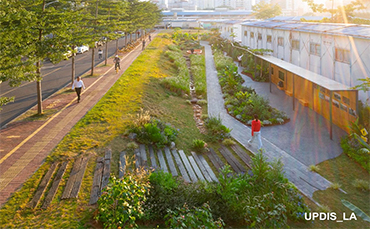


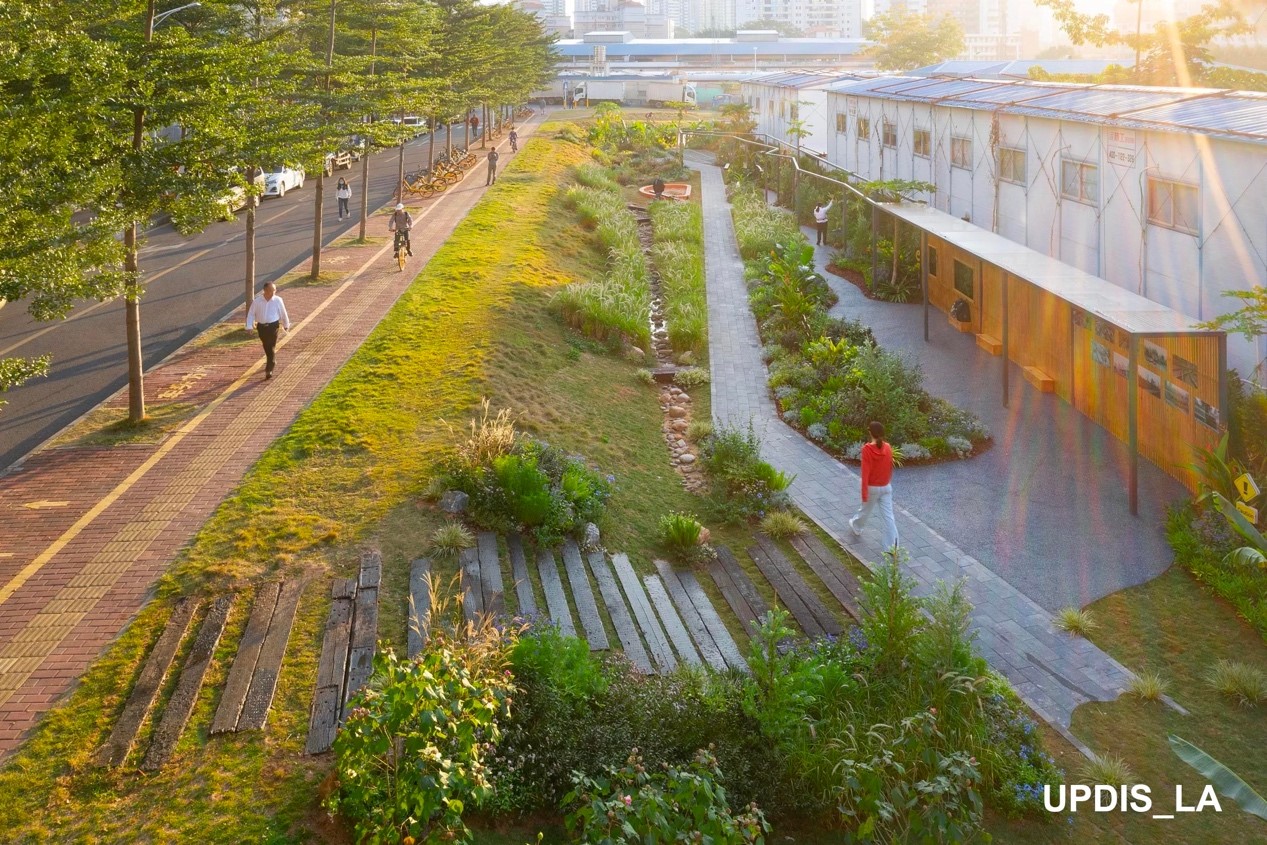
Project overview
Located in the Sungang area of Luohu District, Sungang Train Garden (also known as Hexi 1st Road Community Park) is at the intersection of Baogang Road and Hexi 1st Road and adjacent to the Sungang Station of the Guangzhou-Shenzhen Railway, and covers an area of around 1,500 square meters. The garden is close to Baolong Jiayuan Quarters in Sunxi Community. Relying on the "Co-construction of Gardens" project of Shenzhen, this garden provides a nature-friendly space for people of all ages to get involved personally at their doorstep in the most human-friendly manner through "participatory design and participatory construction", and it has become the new dynamic center of the whole community.
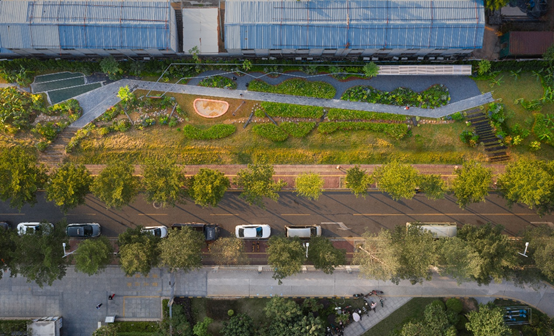
Overall View of the project
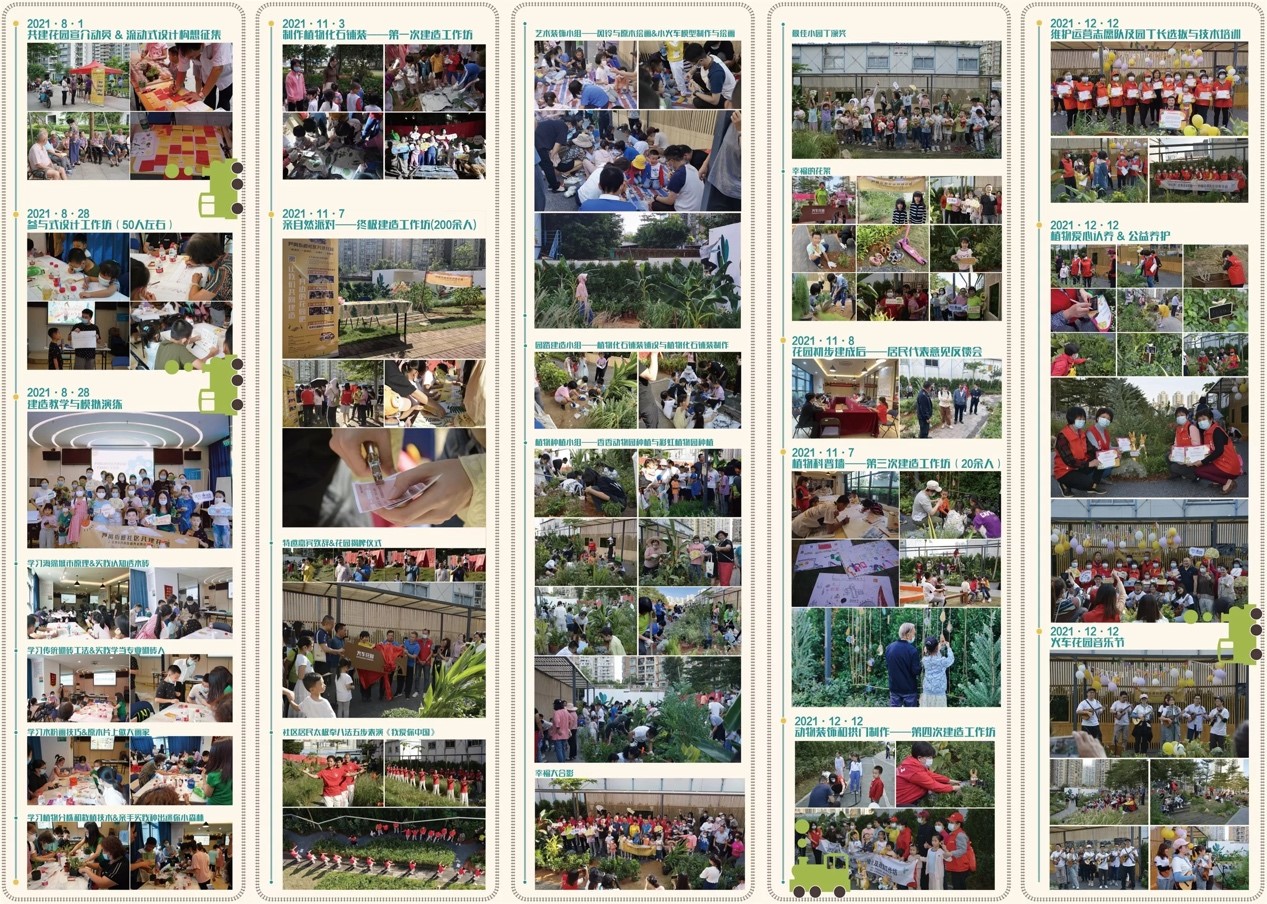
A common course of practicing the concepts of co-construction, co-governance and sharing
The site before the renovation
There was a critical lack of outdoor leisure space in the surrounding area before the renovation. The project site was a vegetable plot that residents illegally reclaimed beside the greenbelt of the road. Visual clutter and disgusting gases seriously affected the townscape of the Sungang area, and nearby residents would keep away from it and often complain about it.
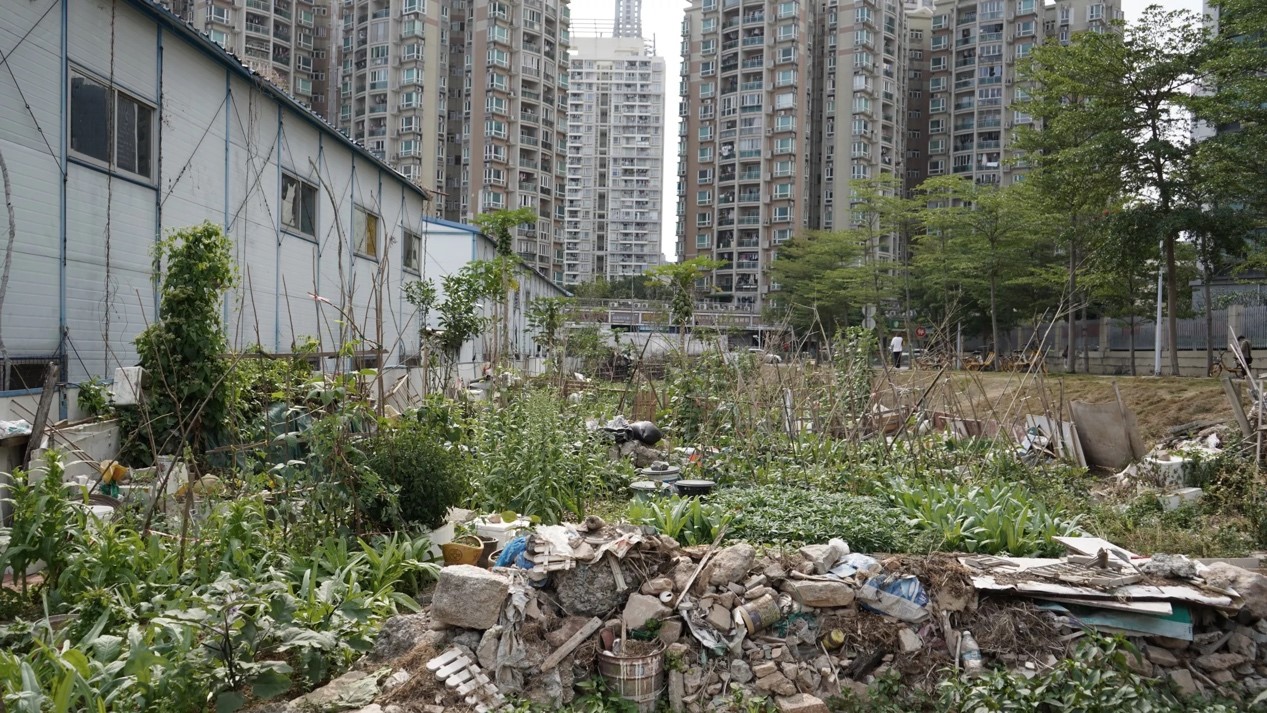
Before the renovation, the site was brimming with wastes and unpleasant odors
After renovation - an all-age-friendly and nature-friendly new community center.
Different from city parks that are large and distant, the train garden is next to the community and provides commoners with a space where they can share the beautiful scene of flowers and get personally involved at their doorstep in the most people-friendly manner. It leads the community residents to get involved in "site selection - design - construction - maintenance - operation" in accordance with concepts of co-construction, co-governance and sharing and takes the garden as a bridge to rebuild neighborly relations and reconnect people in the community. It not only achieves the organic renewal of urban green land, but more importantly it transforms the deserted corner of the city into an emotional field with strong social cohesiveness, to allow every community resident to have a sense of gain and happiness, and it realizes the transformation from a garden to a shared homeland, where more and more community activities and stories are happening.
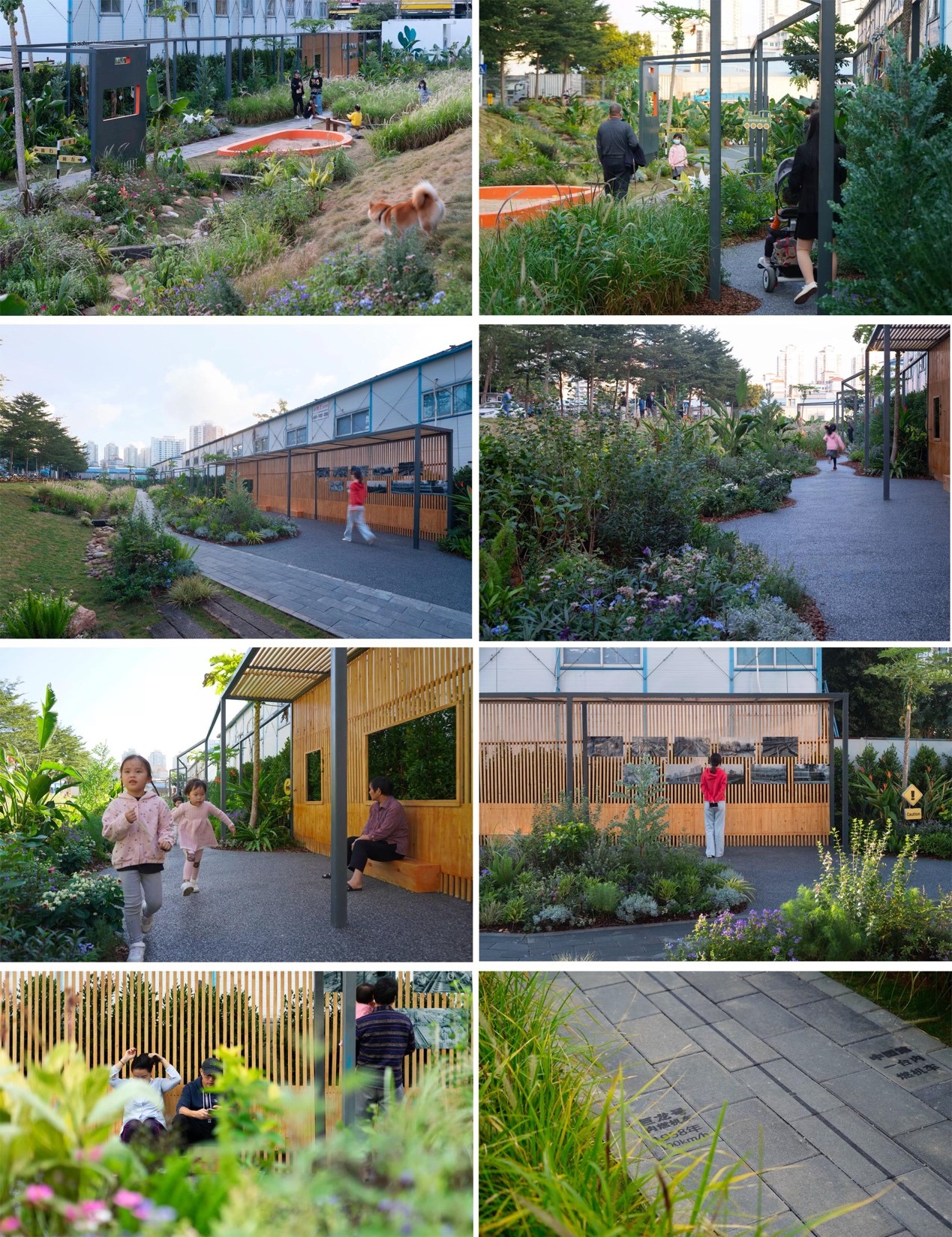
Photos of Sungang Train Garden after the renovation
1.Lend an ear to the original voice of the site and revive the unique memory of Sungang
Sungang Area, Luohu District, Shenzhen City, is reputed as "China's No. 1 Warehouse", and has made tremendous contributions to foreign trade import and export of China and the guarantee of fresh product supply in Hong Kong. The stories between Sungang and the train can be traced back to the completion of Sungang Station in 1962, which was renamed Shenzhen North Railway Station in 1977 and undertook all rail freight business to Hong Kong. In 2009, it changed its name back to Sungang Station and was officially taken out of service one year later. As inbound trains disappeared, Sungang's memories about trains gradually disappeared from the public eye in Shenzhen.
The site of the Sungang Train Garden project is separated only by a wall from Sungang Railway Station (formerly Shenzhen North Railway Station), and it is near the residential quarters of railway employees. The train garden adopted participatory design to guide the community residents to jointly explore design, and finally determined its theme through voting and the council of residents' representatives. The design echoes the theme of the train in multiple aspects by taking advantage of the cultural characteristics of the site. The rail-like road network connects pergolas, scenic locomotive wall, and train window station. The old photos under the pergola show everyone the stories about Sungang Station's transformation with the development of Shenzhen into a museum in memory of Sungang train culture.
2.Protect the original appearance of the site and create a refreshing natural ecological land at the doorstep
Distinctive sponge rainwater base: There is a stretch of the reinforced concrete floor beneath the thin vegetation, which not only obstructs the growth of plants but also severely affects the normal drainage of the site. We take the advantage of the characteristic of the sunken green space-collecting rainwater to set an ecological dry stream and a rain garden according to circumstances, and add single-plank bridges made of crossties to them, which greatly enhances the ornamental value and interactive nature of the sponge landscape.
An ecological homeland where all things coexist: The site survey found that there are "aborigines" on the site, such as red-whiskered bulbul, tomtit, swallowtail, gossamer-winged butterfly, danaus chrysippus, and delias pasithoe, as well as wild grasses, flowers and plant communities like sticktight and oxalis corniculata. The design retains the wild grasses, flowers and plant communities on the site, protects the original papaya trees, and creates a "bird habitat" and "pollinating insect habitat" by planting more food-source berries, plants and nectariferous plants, which greatly protects the original plant communities and promotes biodiversity.
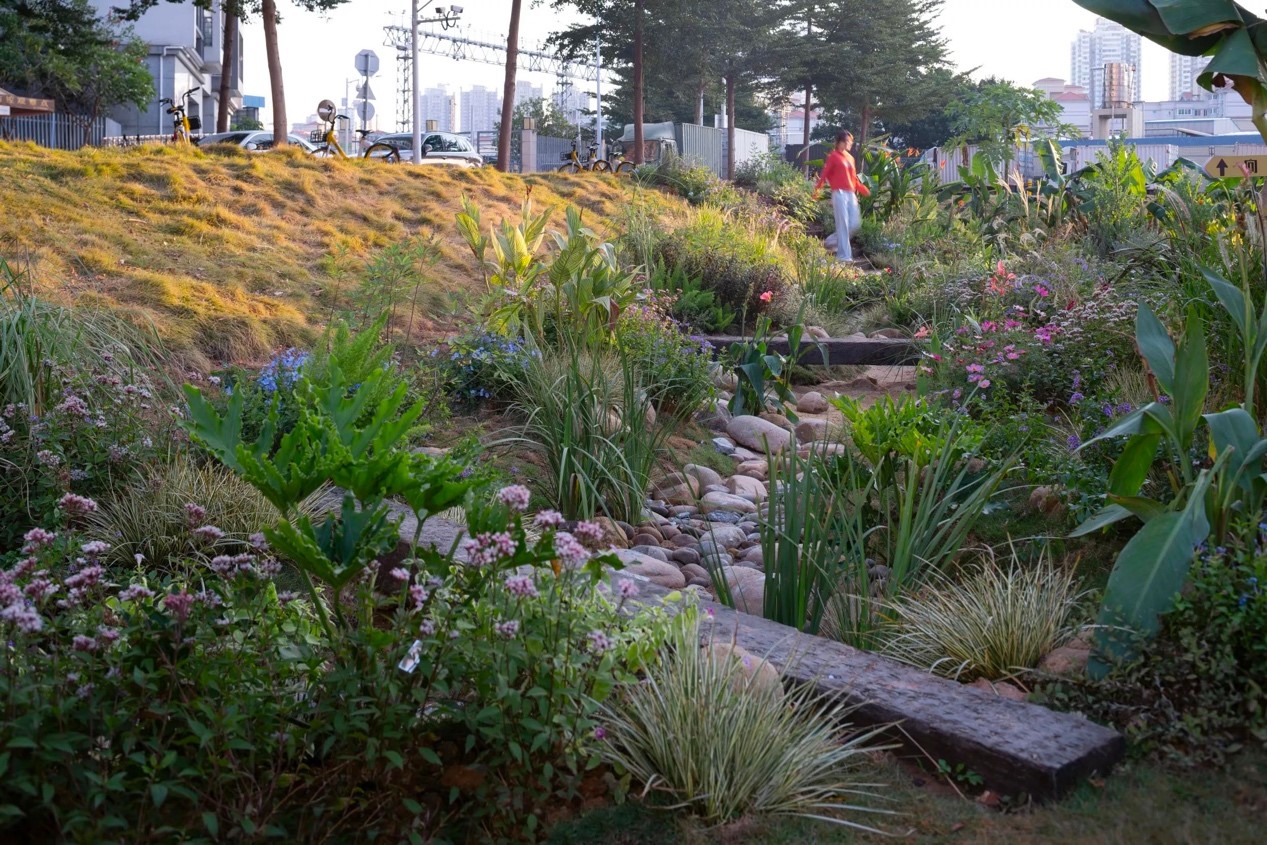
Ecological, artistic and interactive rain garden
Low-maintenance wild natural plant habitat: In consideration of the later maintainability and the ecology of the plant community, we hope to change the previous pursuit of order and scale in plant design, so our plant design no longer reflects the communities with individual plant specimens. Instead, we take a more diversified attitude, select and use more than 80 kinds of plants in the whole garden, which increases the diversity of plants to a certain extent. Moreover, a certain number of native plant communities are included to reinterpret and strengthen the original regional ecosystem of the project site and create a semi-natural botanic atmosphere.
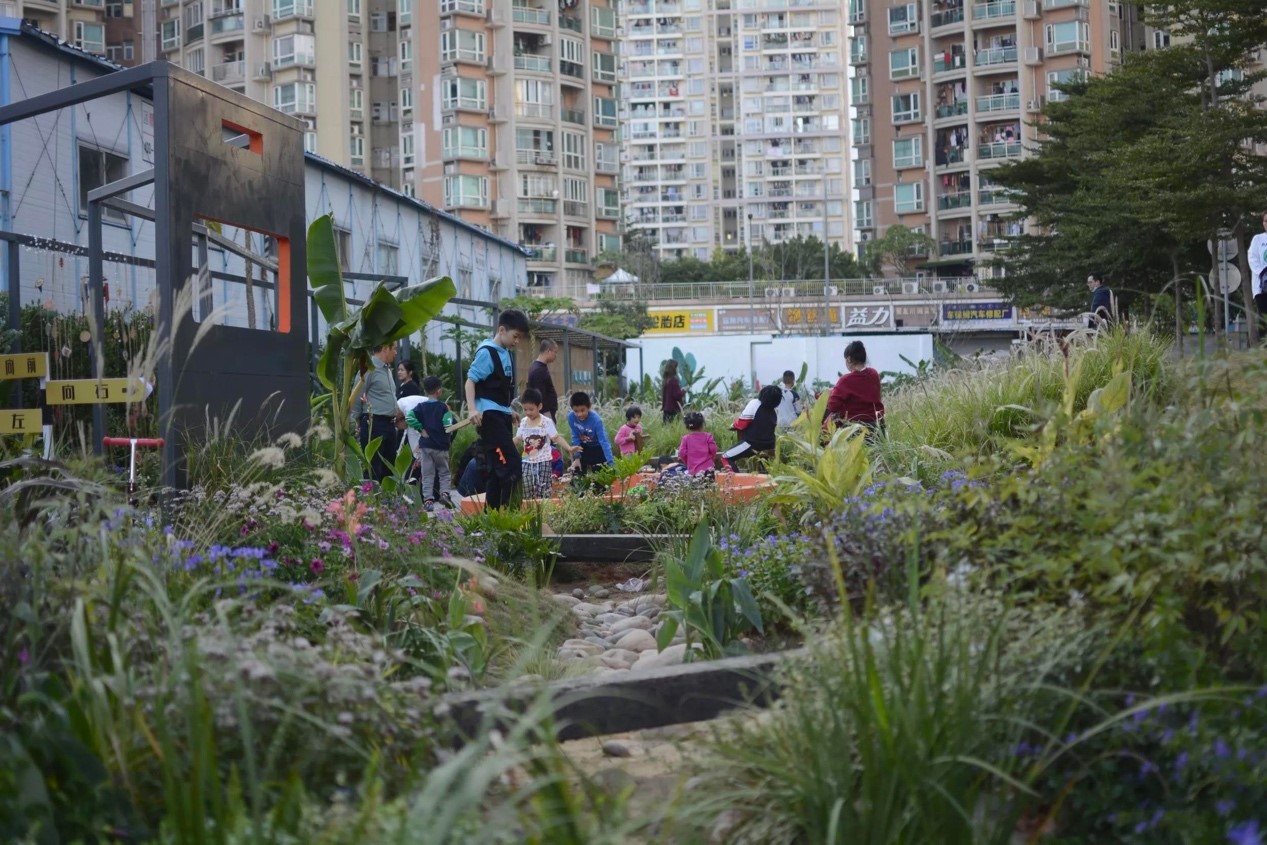
Vegetation landscape full of natural wilderness
Environmentally-friendly and waste-free low-impact construction: The concept of a waste-free city is implemented and the use of waste is maximized. The original concrete rocks piled up under the site are artistically treated and converted into decorative stones. In a low-impact manner, obsolete crossties are washed and made into stairs, single-plank bridges and benches with train elements.
3.Care for the needs of children and build a kid-friendly outdoor natural playground
Children are the "greatest common divisor" of a city and the core of a family unit. The design of a child-centered public space can maximize the vitality of the entire public space, which can not only contribute to the healthy growth of children in all aspects, but also bridge social disparities in modern communities and facilitate community integration. The design takes "Nature Play" as the core rule, and hopes to offer children a wild natural space where they can explore, rest and learn at their doorstep. Seen from a meter high, this design fulfills the kid-friendly concepts in an environmentally safe, material-friendly, plant-friendly, scale-friendly and game-friendly way.
Through participatory design with children, sandpits, quincuncial piles and seesaws are jointly determined as the basic recreational facilities, while the original natural grass slopes on the site and the vigorous dry stream ingeniously made of stones constitute the natural recreational facilities. Looking around, you can see chains of lawns and winding dry streams where you can walk, run, lie down, sit, meditate, play, or begin a great adventure into nature. This is a beautiful part of the city and is at the doorstep of every teenager. This is an outdoor natural playground tailored for them, which is full of vigor and imagination and can inspire creativity.
"Xiangxiang Zoo" designed for children through edutainment: Children's cognition of nature is integrated into the plant landscape design. The attachments of children's playing area are chosen by the three aspects of plant form, plant fragrance and plant name in the principle of "fragrance + fun". Touch is children's natural instinct, so choosing non-toxic and fragrant plants plays a significant part in children's exploration and cognition of nature. These plants include rosemary, plectranthus tomentosus, basil, lemongrass, and tagetes lucida. Vision is the most prominent factor that attracts children, so plants with special forms and names are another key element. Thus, rotheca incisa, pennisetum, asparagus fern, pachystachys lutea, acalypha reptans and other interesting plants with special forms and names are chosen and included in the popularization and education of nature-related knowledge, allowing children to acquire knowledge through games and exploration.
Sungang Train Garden has experienced co-site selection, co-design, co-construction, co-maintenance and co-operation, and it has updated urban green space, activated passive green land and rebuilt neighborly relations with a low-cost and low-maintenance "grassroots" approach. Based on a conventional design, we have explored the model of the co-construction team of "government + residents + social organizations + technical organizations", the participation mechanism of "one child and one family" and the self-operation mechanism of "resident autonomy + community assistance". Coupled with the attractive enough site built, this place has gradually become a new community center and a dynamic place where everyone can enjoy a natural life at their doorstep. More and more stories are happening here, more activities and more exchanges, and the relationship between people becomes closer. Space construction as the medium connects people, and from gardens to playgrounds these spaces jointly create a shared homeland that carries people's warm memories and attachment to the city.
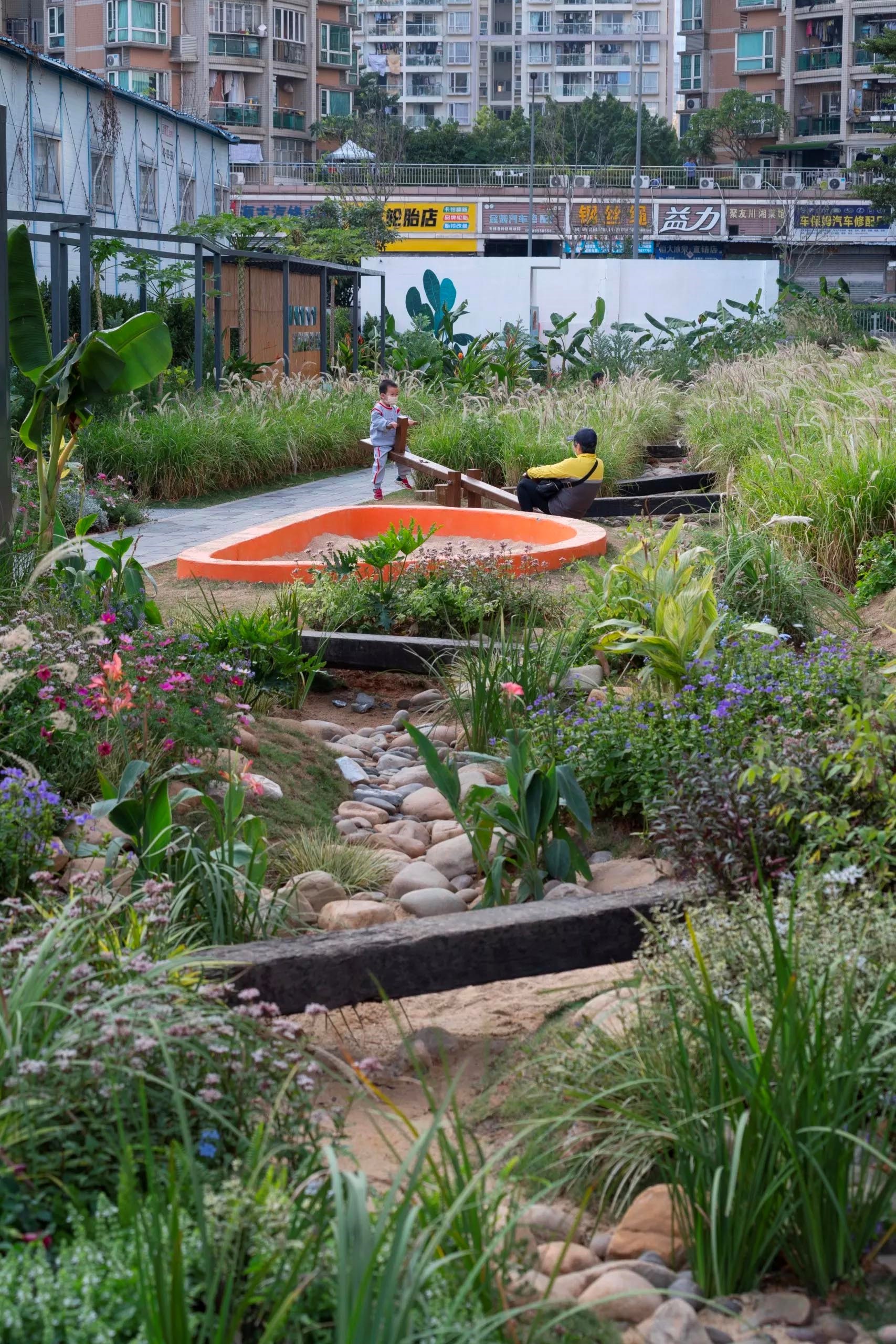
Ample natural gaming spaces and tools
Project Name: Sungang Train Garden
Design and construction: The Urban Planning & Design Institute of Shenzhen
Design team: Yu Guangyu, Song Jiajun, LAN Xiang, Wu Tian, Xu Wenhui, Wang Yue, Chen Muyun, Gu Xiang, Zhang Qingqing
Design time: June 2021 - October 2021
Completion date: November 2021
Location: Luohu District, Shenzhen city, Guangdong Province
Project type: Community garden
Project area: 1500m?
Owner's name: Sungang Sub-district Office, Luohu District, Shenzhen
Photography: Zeng Tianpei, Song Jiajun
Video clip: Song Jiajun
Copywriter: Song Jiajun
Contact email: yugy@upr.cn
Source: <https://mp.weixin.qq.com/s/igULvdU21EF47ZJhBg2hyg>
Edited by Jia Mengyuan